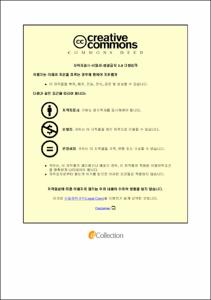316L 스테인리스강의 미세조직에 미치는 가공열처리의 영향
- Alternative Title
- Effect of Thermo-mechanical Treatment on the Microstructure of 316L Stainless Steel
- Abstract
- 상온에서 오스테나이트 조직을 갖는 316L 스테인리스강은 가공성, 내식성 및 감쇠능 등이 우수하여 여러 산업분야에서 많이 사용되고 있는 강이다. 그러나 상온에서 면심입방(FCC) 결정구조로 되어 있기 때문에 항복강도 등이 낮아 내식성을 필요로하는 환경하에서 강도를 요하는 구조재로서 사용에는 제한을 받고 있다. 따라서 강도를 높여 사용범위를 확대하려는 연구들이 많이 수행되어 왔다.
상온에서 오스테나이트 조직으로 되어 있는 강의 강도를 높일 수 있는 방법으로서는 가공에 의해 오스테나이트 조직을 마르텐사이트로 변태시킨 역변태 어닐링처리 하여 0.5㎛ 크기 이하의 초 미세립 오스테나이트 조직으로 만드는 것이 가장 이상적인 방법이라 알려져 있다.
그러나 온도와 가공량을 달리하여 가공을 하거나, 가공에 의해 오스테나이트 조직을 마르텐사이트 조직으로 만든 다음 온도와 시간을 달리하는 역변태 어닐링처리 하는 방법과 가공과 역변태 어닐링처리를 병행하는 가공열처리하는 방법 등에 의해 오스테나이트와 마르텐사이트가 함께 존재하는 2상 조직을 갖는 강으로 만들어서 강도와 연성의 우수한 조합을 얻는 것도 유용한 방법이라 판단된다. 그러나 이와 같이 오스테나이트와 마르텐사이트가 함께 존재하는 2상 조직을 갖는 강은 그 제조방법에 따라 마르텐사이트와 오스테나이트 조직의 성상이 달라지기 때문에 강의 기계적 성질과 감쇠능도 달라지게 된다.
따라서 2상 조직 강의 제조방법에 따른 미세조직의 성상 등의 변화를 조사하는 것이 대단히 중요하다.
뿐만 아니라 상온에서 오스테나이트 조직을 갖는 강에서 가공에 따른 미세조직의 변화는 오스테나이트 조직의 안정도에 따라 달라지고 있을 뿐만 아니라, 특히 가공열처리에 따른 미세조직도 오스테나이트의 안정도에 따라 달라질 것으로 판단된다. 때문에 상온에서 오스테나이트 조직으로 되어 있는 Fe-Mn-Cr계 제진합금에서 가공열처리 하면 αʹ-마르텐사이트와 많은 량의 ε-마르텐사이트가 함께 생성되지만, 316L 등과 같은 오스테나이트계 스테인리스강에서 가공열처리하면 주로 αʹ-마르텐사이트가 생성된다고 보고되고 있지만 아직 이에 대해서는 명확하게 규명되지 못하고 있다. 특히, 오스테나이트 조직을 갖는 강에서 ε-마르텐사이트의 생성 여부는 감쇠능에 크게 영향을 미치기 때문에 가공열처리에 따른 ε-마르텐사이트의 생성여부를 조사하는 것은 강도와 감쇠능의 우수한 조합을 얻어 이강의 사용범위를 확대하고자 하는 측면에서도 꼭 필요한 실정이다.
따라서 본 연구는 여러 산업분야에서 다양하게 사용되고 있는 316L 스테인리스강에 대하여 가공 후, 역변태 어닐링처리를 병행하는 가공 열처리를 반복적으로 행하여 가공열처리에 따른 미세조직 변화를 조사하였다.
316L stainless steel is a type of austenitic stainless steels which has great corrosion resistance and manufacturability. By significantly reducing the amount of C in a stainless steel, the intergranular corrosion has decreased; and by adding more than 2% of Mo to the stainless steel, it has obtained better oxidation resistance.
However, 316L stainless steel has low strength and hardness value. In order to improve these values in austenitic structure at room temperature, thermo-mechanical treatment was conducted.
This is study was carried out to investigate the effect of thermo- mechanical treatment on the microstructure of 316L stainless steel. Dislocation, Stacking faults, and ɑʹ-martensite were mainly formed by the thermo-mechanical treatment.
The result obtained from this study are as follow:
ɑʹ-martensite was formed with the specific direction and surface relief by deformation.
Reverse transformation annealing was conducted at 700℃ for 20min.
And the thermo-mechanical treatment which conducts rolling and reverse transformation annealing was carried out up to a maximum of five times
The fraction of ɑʹ-martensite, dislocation and stacking fault were increased with the cycle number of thermo-mechanical treatment. The grain size of the austenite was fairly deformed and changed from micrometer to sub-micrometer size by adding number of thermo-mechanical treatment. EBSD results showed IPF orientation relationship and phase distribution of the 1-cycle and 5-cycle thermo-mechanical treated 316 stainless steel.
- Issued Date
- 2016
- Awarded Date
- 2016. 2
- Type
- Dissertation
- Publisher
- 부경대학교 일반대학원
- Affiliation
- 부경대학교 일반대학원
- Department
- 대학원 금속공학과
- Advisor
- 강창룡
- Table Of Contents
- Abstract ⅱ
1. 서 론 1
2. 실험방법 3
2.1 시료 3
2.2 가공열처리 3
2.3 미세조직 관찰 4
2.4 X-선 회절시험 4
2.5 EBSD 분석 5
3. 실험결과 및 고찰 6
3.1 미세조직 6
3.2 가공열처리에 따른 미세조직변화 11
3.3 마르텐사이트 생성에 미치는 가공열처리의 영향 15
4. 결론 25
참고문헌 26
- Degree
- Master
- Files in This Item:
-
-
Download
 316L 스테인리스강의 미세조직에 미치는 가공열처리의 영향.pdf
기타 데이터 / 1.74 MB / Adobe PDF
316L 스테인리스강의 미세조직에 미치는 가공열처리의 영향.pdf
기타 데이터 / 1.74 MB / Adobe PDF
-
Items in Repository are protected by copyright, with all rights reserved, unless otherwise indicated.